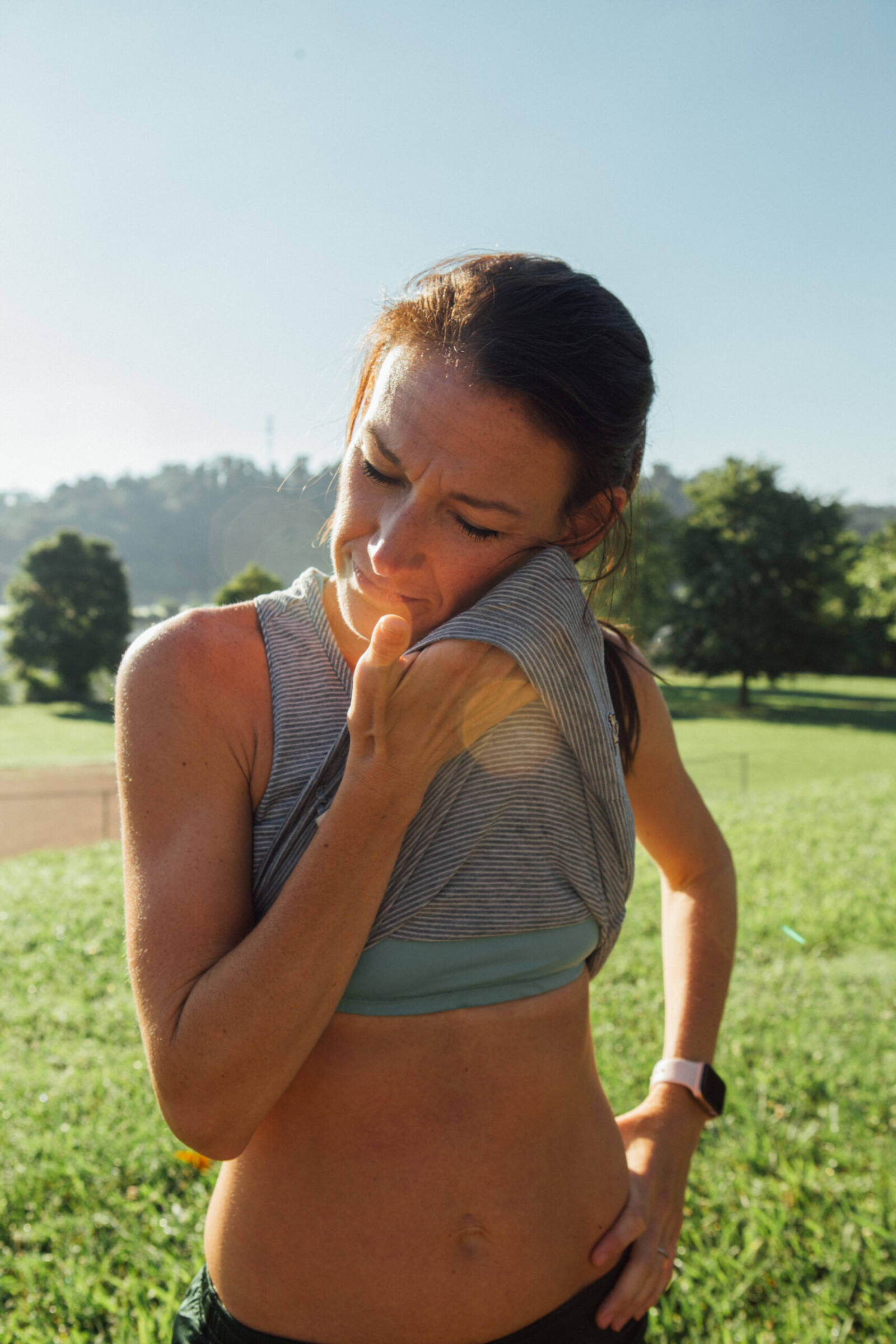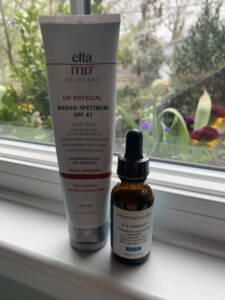Runner’s face is the saggy leather-like skin on your face. It can be attributed to sun damage, free radicals, and low body fat. Taking measures like protecting yourself from free radicals and sunlight can prevent runner’s face.

We run to keep us young but running can make you look old. All that hard work in the sun adds stress to your body and can add years to your face in what is known as runner’s face.
What is runner’s face? If you haven’t heard the term, you’ve likely seen it. It is the face of a lifelong runner with leathery, saggy skin and a gaunt appearance. It is the result of lots of sun exposure and little body fat.
The term runner’s face was likely coined by plastic surgeons decades ago who were trying to market injectable fillers and wrinkle reducers such as Botox, Dysport, Juvederm Ultra, Radiesse, and Restylane.
Table of contents
I have been running for about three and a half decades, and I can say that I wish I had known a lot of these tips a long time ago. So, if you are new in your running journey, hopefully, these steps will help you stay fresh in the face while you do what you love—run!
So, let’s get to it!
What causes runner’s face?
These plastic surgeons tried to claim that the bouncing of running can lead to wrinkles and sagging skin, but there is no scientific evidence to support this. Rather the look of runner’s face can be attributed to sun damage, free radicals, and low body fat.
Sun damage.
The main reason why runners look older is from running in the sun without UV protection. This can lead to wrinkles, thickened skin, sagging skin, sunspots, pre-cancerous spots, and skin cancer.
Free radical exposure.
Free radicals are unstable atoms that can damage cells. Your body produces them when it’s under stress.
Research shows when running we are doubly exposed to free radicals since running hard produces them as well as running outside where there is air pollution.
Our bodies try to combat these free radicals with antioxidants, but when it doesn’t have enough there is an imbalance called oxidative stress that can lead to illness and aging (and sagging) in the form of collagen and elastin breakdown.
Low body fat.
Body fat can add plumpness to our faces. It softens our features and can make us look younger by filling in wrinkles. When we have low body fat, lines are emphasized, and our faces can look gaunter and more angular.
And, when we lose a lot of weight, our skin lacks the elastin and collagen to tighten leading to sagging skin.
But that doesn’t mean we should stop running. Heck, no! It just means we need to take some steps to protect our skin so that running doesn’t us look older than we are!

10 Ways to Avoid Runner’s Face
Don’t run in the sun.
If you can, try to run in the early morning or evening hours when the sun isn’t high in the sky. Avoid running between the hours of 10 a.m. and 4 p.m. if you can.
And, if you can’t, try to find a shady path to run on and wear sunscreen, a hat, sunglasses, and UV protective clothing.
Related: How to Become a Morning Runner
Use sweat-resistant sunscreen.
No matter what time you run (unless it is completely dark), wear a broad-spectrum mineral-based sunscreen that is sweat and water-resistant. Apply it about 30 minutes before your run everywhere the sun will touch.
And bring it with you if you are going on a long run and will be out longer than an hour. Pro tip: tinted moisturizer adds extra protection. I like Elta MD’s tinted sunscreen moisturizer.
Related: How to Acclimate to Running in the Heat
First and foremost, protect your skin from the sun’s harmful UV rays by trying to run early in the morning or evening and always applying sunscreen. Be sure to apply it ahead of time to allow the sunscreen to soak in before heading out to run.
Related: The Scientific Benefits of the Long Run
Apply moisturizer every day.

In addition to sunscreen, be sure to apply moisturizer daily and use a night cream at night such as Elta’s PM Therapy which gives your skin a healthy dose of moisture to help elasticity.
It contains Niacinamide and antioxidants to boost your skin color and tone by speeding up your skin’s repair processes. Rice protein peptides aid in encouraging cell growth, promoting collagen formation and improving elasticity.
Take Nicotinamide.
Nicotinamide is a form of vitamin B3 that research shows can aid in repairing sun damage and reduces the damaging effects of UV exposure.
Eat antioxidants.
Fight free radicals by eating a diet rich in antioxidants which improve cellular regeneration. Some foods to eat include:
- Leafy greens
- Berries
- Beets
- Dark chocolate
- Pumpkin
- Sweet potatoes
- Beets
- Broccoli
- Potatoes
Apply a Vitamin C and E serum.
Use a Vitamin C+E serum before you head out the door to also fight free radicals in the air, especially if you live in an urban area or an area with lots of air pollution.
I like Skinceuticals C E Freulic Serum, and apply it every day. (I wish I had started sooner!).
Drink water.
Drinking water helps maintain your skin’s moisture and elasticity which prevents sagging and minimizes the look of fine lines and wrinkles. It also helps your body remove toxins, AND it is important for your running performance. Aim for half an ounce to an ounce of water for each pound you weigh.
Related: Healing Foods for Runners
Use Botox and fillers.
It took me a long time to jump on the Botox bandwagon but I am so glad I finally did as injectables like Botox and Dysport can reduce wrinkles and prevent future ones or current ones from deepening.
I don’t get them as regularly as I should (because they are expensive!) and have found that the effects wear off quicker the more I run, however, it is amazing how much younger and fresher I look when I get these injections.
Fillers such as Restylane, Juvederm Ultra, and Radiesse fill in lines that are untreatable by Botox such as smile lines. I have not used them (because I’m afraid it will make me look like a Desperate Housewife!) but they are another tool you can use to combat runner’s face.
Practice moderation.

Research show that running hard creates more oxidative stress which can make runners age prematurely.
By no means would I ever tell you to not chase your goals to save your face. But avoid doing hard workouts in the sun. Aim to run hard at sunrise or dusk.
When you do train hard, balance it out with a healthy, colorful diet rich in antioxidants.
If you run in the sun, use the sunscreen and serums and recover well.
Run!
For all the fear that running makes you look older, there is evidence that running makes you look younger!
Running improves blood flow to your face which helps repair skin and increase the production of collagen, making your face plumper and firmer.
Sweating moisturizes and softens your skin and releases toxins from your body. Just be sure to cleanse your face soon after getting back from your run to wash away the toxins and avoid acne.
Running also helps balance stress hormones in our body like cortisol. When we have too much cortisol we can gain weight, get sick, and suffer from fatigue.
Can you reverse sun damage?
If you are like me, and you didn’t take steps to save your skin while you were younger (I thought I was doing good by spraying some Coppertone before I headed out the door!), it’s not too late!
Measures you take today can help prevent sun damage in the future and can even reduce some of your present sun damage effects such as wrinkles (but not DNA changes).
A lot of these tips benefit your running performance (like eating well and staying hydrated) and overall health. So, it is a win/win/win!
If you want a custom plan to fit your marathon goals with your busy schedule, check out my run coaching services. Also, be sure to check out my free training plans:

Hi Whitney,
I’ve enjoyed your article with tips on how to avoid “runner’s face.”
Growing up in Florida and being an active runner most of my life, I’ve had my share of sun exposure.
Another great tip is including salmon or other oily fish in the diet, such as sardines, tuna & mackerel. These are especially effective in providing calcium for good bone health, beneficial omega 3 fats for both skin and heart health, while at the same time, adding a prolonged,
non-injectable form of wrinkle reducing protein. This protein not only helps in the reduction and appearance of wrinkles in facial skin, by adding face firming collagen for firmer, younger looking skin, but it also aids in adding protein to assist in a runner’s overall muscle recovery, with added joint protection as well.
Salmon is often cited by leading dermatologists as one of the best sources of fish to consume, particularly when it comes to skin health and the multiple health benefits it provides.
Salmon is one of the best foods that a runner can include in the diet. Beans and nuts (legumes) are another, but that’s another conversation entirely.
Thank you for this pro tip!